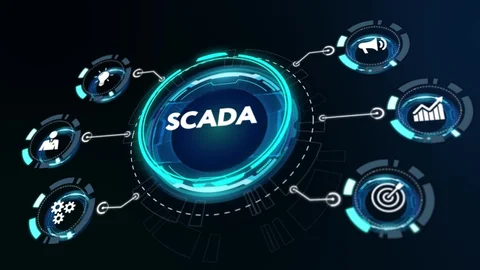What are SCADA attacks?
Supervisory Control and Data Acquisition (SCADA) systems, crucial for monitoring and controlling industrial processes, are susceptible to a range of cyber threats. Understanding the various SCADA attacks is essential for organizations to fortify their critical control systems. Here are several types of SCADA attacks:
1. Unauthorized Access:
Description: Unauthorized access involves attackers gaining entry into SCADA systems without proper authentication. This can lead to unauthorized control of industrial processes, data manipulation, and potential disruptions.
Mitigation: Implementing strong access controls, multi-factor authentication, and regular monitoring of user activities help mitigate the risk of unauthorized access.

2. Malware and Ransomware:
Description: Malicious software (malware) and ransomware can infect SCADA systems, leading to disruptions, data manipulation, or extortion. Ransomware can encrypt critical data, demanding payment for its release.
Mitigation: Regularly updating antivirus software, conducting periodic malware scans, and adopting secure network practices are essential for mitigating malware and ransomware threats.
3. Denial of Service (DoS) and Distributed Denial of Service (DDoS):
Description: DoS and DDoS attacks aim to overwhelm SCADA systems with traffic, causing service disruptions. This can lead to delayed response times, loss of control, or temporary shutdowns.
Mitigation: Implementing network redundancy, deploying firewalls, and utilizing DDoS mitigation services can help mitigate the impact of DoS and DDoS attacks.
4. Man-in-the-Middle (MitM) Attacks:
Description: MitM attacks involve intercepting and potentially altering communication between SCADA components. Attackers can eavesdrop on sensitive data, manipulate commands, or inject malicious content into the communication stream.
Mitigation: Implementing secure communication protocols, encrypting data in transit, and regularly monitoring network traffic help mitigate the risk of MitM attacks.
5. SQL Injection and Command Injection:
Description: SQL injection and command injection attacks target vulnerabilities in SCADA applications. Attackers inject malicious SQL queries or commands to manipulate databases, compromise integrity, or gain unauthorized access.
Mitigation: Ensuring secure coding practices, input validation, and regularly patching software vulnerabilities help prevent SQL injection and command injection attacks.
6. Zero-Day Exploits:
Description: Zero-day exploits target vulnerabilities in SCADA systems that are unknown to the vendor or security community. Attackers leverage these vulnerabilities before patches or countermeasures are available.
Mitigation: Regularly updating and patching SCADA systems, employing intrusion detection systems, and staying informed about emerging threats help mitigate the risk of zero-day exploits.
7. Physical Attacks:
Description: Physical attacks involve tampering with the hardware components of SCADA systems, such as sensors, controllers, or communication lines. These attacks can lead to false readings, equipment damage, or safety hazards.
Mitigation: Implementing physical security measures, surveillance, and tamper-evident technologies help safeguard SCADA systems against physical attacks.
8. Supply Chain Attacks:
Description: Supply chain attacks target vulnerabilities in the interconnected network of suppliers and vendors associated with SCADA systems. Threat actors may exploit weaknesses in the supply chain to compromise critical components.
Mitigation: Conducting thorough security assessments of suppliers, establishing secure communication channels, and implementing supply chain security measures help mitigate the risks associated with supply chain attacks.
9. Insider Threats:
Description: Insider threats involve malicious actions or unintentional errors by individuals within the organization who have access to SCADA systems. This can include employees, contractors, or third-party personnel.
Mitigation: Implementing least privilege access, monitoring user activities, and conducting security awareness training help mitigate the risks associated with insider threats.
Understanding and addressing these various SCADA attacks require a multi-faceted approach that combines technical measures, secure coding practices, user education, and ongoing monitoring. Organizations that operate SCADA systems should adopt a proactive and vigilant stance to protect their critical control systems from evolving cyber threats.




